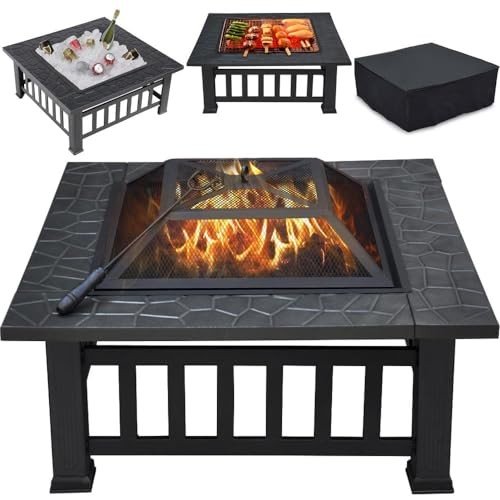Affordable Fireplaces in the UK: A Comprehensive Guide
Fireplaces have actually long been a centerpiece of warmth and comfort in homes, offering a cozy environment throughout the cooler months. However, with numerous homes dealing with financial restrictions, the demand for cheap fireplaces in the UK has gotten significant traction. This post intends to check out different inexpensive choices, elements to think about when purchasing, installation information, and maintenance pointers to guarantee durability and safety.
Types of Cheap Fireplaces
When looking for a cost effective fireplace, a number of types are offered that cater to different spending plans and home styles. Below is a list of some typical classifications of economical fireplaces:
1. Electric Fireplaces
- Overview: These fireplaces utilize electrical energy to generate heat and mimic the appearance of genuine flames.
- Pros: No emissions, easy setup, and adjustable heat settings.
- Cons: Higher electric costs, not ideal for all aesthetics.
2. Gas Fireplaces
- Overview: Rely on natural gas or gas to produce real flames.
- Pros: Efficient heat output, instant heat, and frequently included push-button controls.
- Cons: Requires gas line installation, which may sustain additional costs.
3. Wood-Burning Stoves
- Overview: These traditional fireplaces burn wood logs to produce heat and ambiance.
- Pros: Lower running costs if wood is sourced in your area, genuine experience.
- Cons: Requires more upkeep, a chimney system, and sourcing fire wood.
4. Bioethanol Fireplaces
- Summary: Use bioethanol to develop genuine flames without being linked to a flue.
- Pros: Portable, simple to establish, and produces little smoke.
- Cons: Limited heat output and can be pricey if utilized regularly.
5. Inserts and Surrounds
- Introduction: Inserts or surrounds are generally included to existing chimney areas to update or enhance a fireplace.
- Pros: Cost-effective means of upgrading an old fireplace, increased effectiveness.
- Cons: Initial installation cost may differ, and not all homes work.
Table 1: Comparison of Cheap Fireplaces
| Type | Average Cost (₤) | Operating Cost | Setup Difficulty | Visual Appeal |
|---|---|---|---|---|
| Electric | 100 - 500 | Low | Easy | Moderate |
| Gas | 300 - 700 | Moderate | Moderate to Difficult | High |
| Wood-Burning | 150 - 600 | Low to Moderate | Moderate to Difficult | High |
| Bioethanol | 200 - 800 | Moderate | Easy | High |
| Inserts/Surrounds | 200 - 1,000 | Varies | Moderate | High |
Factors to Consider When Choosing a Cheap Fireplace
When selecting a cheap fireplace, a number of elements need to be taken into consideration to guarantee that the purchase lines up with your home's requirements and spending plan:
Space and Size
- Assess the size of the space where the fireplace will be set up. Larger spaces may need more effective heating alternatives, whereas smaller areas might benefit from compact electric or bioethanol models.
Fuel Type
- Choose between electric, gas, wood, or bioethanol based on availability, personal preference, and local guidelines concerning emissions and safety.
Installation Requirements
- Consider whether the fireplace requires comprehensive setup work, such as venting and chimney building, which can considerably increase expenses.
Cost of Operation
- Compute the continuous fuel or electrical power expenses to maintain warmth throughout the cold weather.
Visual Design
- Go with a fireplace that complements the existing decor of your home, whether modern, traditional, or rustic.
Maintenance Tips for Your Fireplace
As soon as a cheap fireplace is set up, proper upkeep is crucial for safety and longevity. Here are some important maintenance pointers:
- Schedule Annual Inspections: For gas and wood-burning fireplaces, it's vital to have a yearly inspection to look for gas leaks or clogs in the chimney.
- Routine Cleaning: Dust and keep electric fireplaces and clean out ash from wood-burning ranges to avoid fire dangers.
- Appropriate Fuel Storage: For wood-burning stoves, store firewood in a dry location to ensure effective burning and avoid mold development.
- Use Quality Fuel: Always use ideal fuel for gas and bioethanol fireplaces to prevent excess soot and emissions.
- Install Carbon Monoxide Detectors: For gas or wood-burning designs, install detectors to ensure that any leak of hazardous gases is rapidly recognized.
Frequently asked questions
1. What is the cheapest kind of fireplace?
Electric fireplaces are generally among the most budget-friendly alternatives, offering a range of costs that can fit most spending plans.
2. Can I install a fireplace myself to save money?
While some electric and bioethanol fireplaces can be quickly set up without professional help, gas and wood-burning designs normally require setup by a certified service technician to guarantee safety.
3. For how long do electric fireplaces last?
Electric fireplaces can last for several years with correct care, generally around 10-15 years, depending upon usage and the quality of the system.
4. What is the most efficient fireplace?
Gas fireplaces tend to be the most efficient, supplying instantaneous heat with controlled emissions.
5. How do I know if my fireplace is safe to utilize?
Regular evaluations, correct cleaning, and making sure that there are no blockages or leaks can assist preserve security in any kind of fireplace.
Discovering a cheap fireplace in the UK doesn't mean compromising on style or safety. With a wide variety of alternatives available-- from electric to wood-burning models-- homeowners can enjoy a warm and inviting ambiance without breaking the bank. By comprehending simply click the following page , considering important aspects before buying, and preserving the fireplace appropriately, individuals can invest carefully for several years of pleasure.

